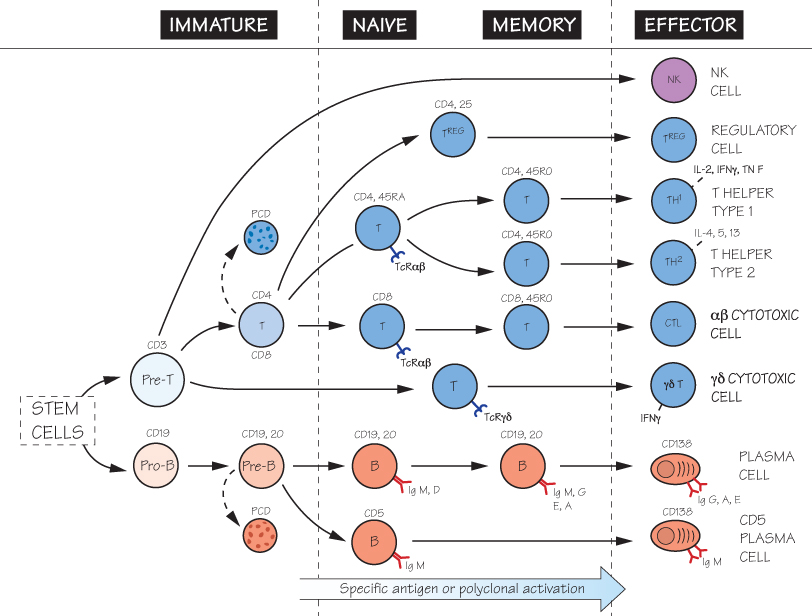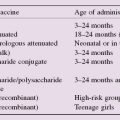15
Lymphocytes

As befits the cell of adaptive immunity, the lymphocyte has several unique features: restricted receptors permitting each cell to respond to an individual antigen (the basis of specificity), clonal proliferation and long lifespan (the basis of memory), and recirculation from the tissues back into the bloodstream, which ensures that specific memory following a local response has a body-wide distribution.
The discovery in the early 1960s of the two major lymphocyte subpopulations, T (thymus-dependent; top) and B (bursa or bone marrow-dependent; bottom), had roughly the same impact on cellular immunology as the double helix on molecular biology. The first property of T cells to be distinguished was that of ‘helping’ B cells to make antibody, but further subdivisions have subsequently come to light, based on both functional and physical differences (top right). In the figure, the main surface features (or ‘markers’) of the various stages of lymphocyte differentiation are given, using mainly the CD classification (see Appendix III) but also indicating the production of key cytokines.
Cells resembling lymphocytes, but without characteristic T-cell or B-cell markers, are referred to as ‘null’. This group probably includes early T cells, B cells and ‘natural killer’ cells important in tumour and virus immunity. In blood and lymphoid organs, up to 10% of lymphocytes are ‘null’.
One of the most exciting developments in biology was the discovery that it is possible to perpetuate individual lymphocytes by fusing them with a tumour cell. In the case of B lymphocytes, this can mean an endless supply of individual, or monoclonal, antibodies, which has had far-reaching applications in the diagnosis and treatment of disease and the study of cell surfaces. Indeed, the classification of lymphocytes themselves, and of most other cells too, is now mainly based on patterns of reactivity with a large range of monoclonal typing antibodies (see Appendix III).
In the case of T cells, it is also possible to keep them proliferating indefinitely in culture by judicious application of their specific antigen and non-specific growth factors such as IL-2 (see Figs 23 and 24). The properties of the resulting lines or clones have given much information on the regulation of normal T-cell function.
Naïve Cells
Once mature, lymphocytes (B or T) circulate through blood and lymph nodes in search of specific antigen. These cells can be very long-lived, and divide only very rarely. Such lymphocytes, which have yet to encounter antigen, are known as naïve or virgin (see Fig. 17). Naïve T cells enter lymph nodes from blood at special sites known as high endothelial venules (HEV). They then travel though the lymph node in search of antigen presented on the surface of antigen-presenting dendritic cells in the T-cell areas of lymphoid tissues.
Memory Cells
After lymphocytes encounter antigen they enter cell division, in order to increase the number of cells specific for that particular antigen. A proportion of cells then become memory cells. The migratory paths of memory cells and naïve
Stay updated, free articles. Join our Telegram channel

Full access? Get Clinical Tree




